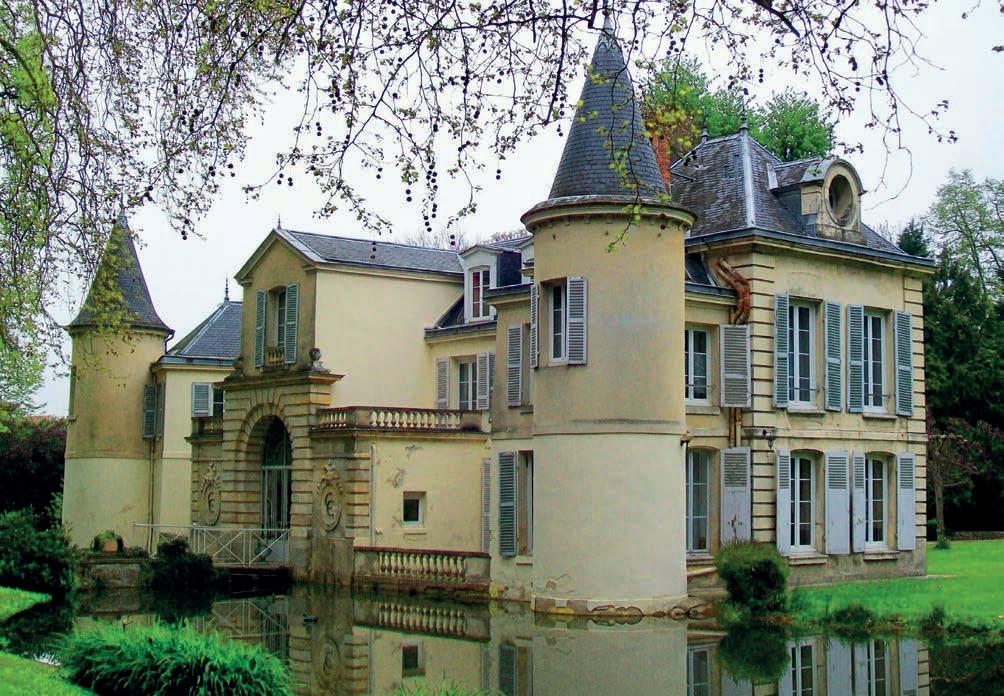
4 minute read
The Chaumontel
The chaumontel pear and its jersey story
By Vincent Obbard of Samarès Manor
Advertisement
Chaumontel is a small town with a Chateau just North of Paris, south of Chantilly, near Luzarches, Seine-et Oise.
This is the place which gave its name to a pear which became famous in the Channel Isles due to its wonderful taste and enormous size. It seems that it was here that they were grown bigger and better than anywhere else.
The pear was discovered by a fruit expert called, Merlet, and included in his book called ‘L’Abrégé des Bons Fruits’ (1675) just at the time that Louis IV was establishing his massive 25 acre ‘Potager du Roi‘ at Versailles, on other side of Paris, to the South West.
One could say ‘Right place, right time.’ A gift of pears was a welcome gift to anyone of class with good taste. In 1760, one Nicolas de Ste Croix, in dire financial straits, asked a friend in Jersey to send a gift of Chaumontel Pears to the Earl of Liverpool, President of the Board of Trade, asking for preferment, sadly, however, to no avail.
Only just two years after the Battle of Trafalgar in 1805, John Stead wrote a guide book which gives a glowing account of the Jersey countryside including how the productive soil enabled the inhabitants to grow superior fruit of all kinds:
“The flavour and size of their peaches, nectarines, apricots, plums, grapes and pears are not excelled in any country in Europe. A species of pears called Chaumontels, which are carefully raised in this island, are unrivalled for their peculiarly delicious flavour; they are often sold here for five pounds a hundred, and many thousand are sent to England every season for presents, and to supply the principal fruit shops in Covent Garden, where they are not unfrequently sold for the extraordinary sum of half a crown each”. “ The Chaumontel
A prominent figure in Jersey during the 19th Century was John (later Sir John) Le Couteur FRS, of Belle Vue, St Aubin. In 1833, he was appointed secretary to the newly formed Jersey Agricultural and Horticultural Society. In 1831, he had already been appointed ADC to King William IV. The fact that the Society obtained Royal patronage in 1834 must have been more than partially due to his influence. In 1834, Sir John gave the King a gift of a Belle de Jersey Pear, which he had grown for the Horticultural show in Jersey. It had won first prize and weighed 46 ounces. He sent two other pears to the King, which he had declared to be the best he had ever eaten.
The largest Chaumontel ever recorded was presented to Queen Victoria in 1849. It weighed an astonishing 38 ounces, or over a kilo. Even allowing for Jersey weights which were 11/2 ounces per pound heavier than English weights, the competition for the heaviest pears is impressive. The fame of the Chaumontel was not confined to the Island and they were regularly exhibited as well as exported to England, where they obtained high prices.
The Gardener’s Chronicle of October 19th 1878 refers to a report from Mr C. B Saunders, the Jersey nurseryman, which states that a sample weighing 21 ounces was exhibited at the Royal Jersey show:
‘No Apricot, Nectarine, Peach, or Plum is of such delicious flavour as this kind of Pear, with the additional qualification of ripening about Christmas time, when these other fruits are unobtainable, of first rate quality.’
Saunders Nursery, near Granville, Five Oaks, was a tourist attraction in itself. In 1846, Le Couteur had pointed out the nursery to Queen Victoria as he gave the Queen a guided tour of the Island during her visit to the Island that year. So what happened to the wonderful reputation enjoyed by the Chaumontel Pear, which is nowadays unheard of? There are maybe two reasons. First, the popularity of pears as winter fruit has declined, now that so many other fruits can be grown and transported around the world. Secondly, other pear varieties have become popular. Few survive today.
Brian Phillipps, who collected all the Jersey apple varieties in the 1980’s also found surviving Chaumontel trees in Jersey. There is now a good specimen grafted by him growing on a south facing wall at the Elms, St Mary.
The Chaumontel needs good rich soil and plenty of sunshine to grow to its perfection. It has to be understood that the pear is late to mature. If picked in October it must be kept in a dry cool place until Christmas when it ripens and can be enjoyed at its best.
An expanded version of this article is available under the 'News' section of the RURAL website, ruraljersey.co.uk











